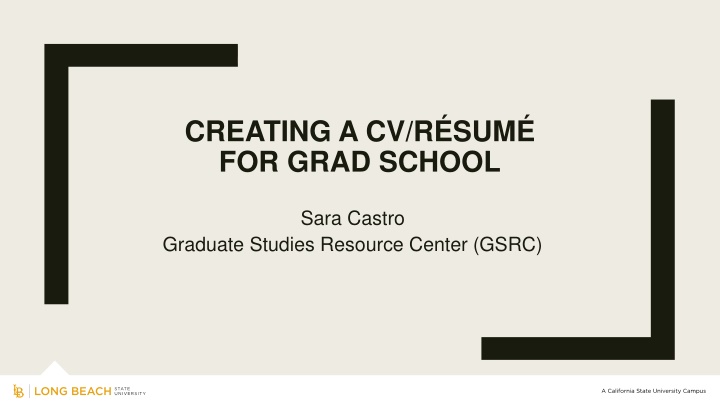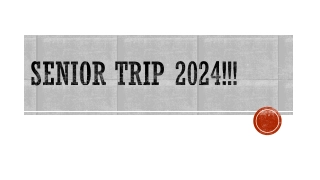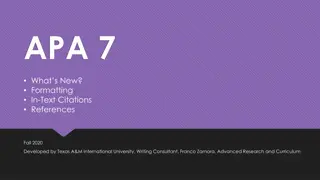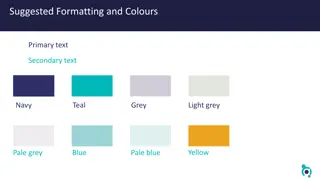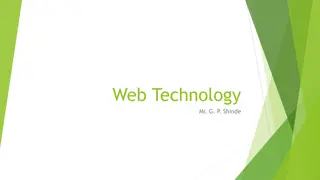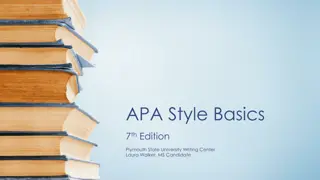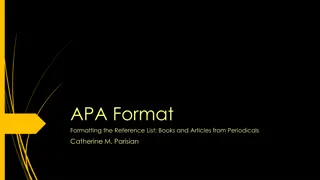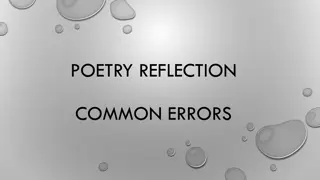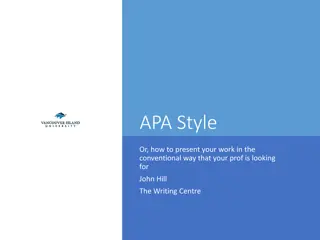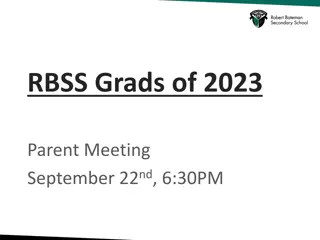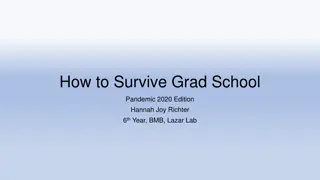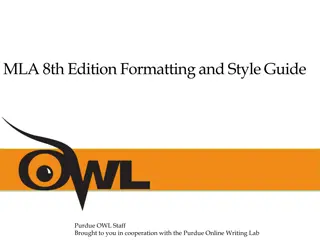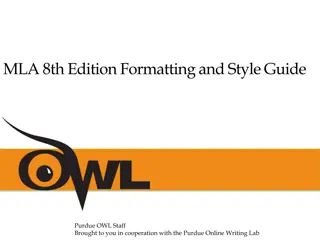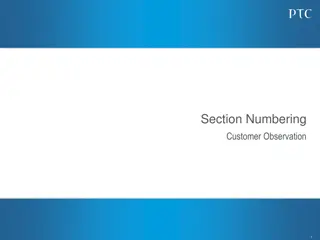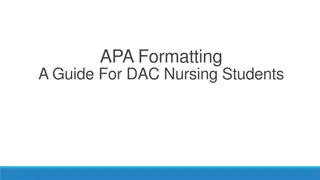Creating a CV for Grad School: Key Differences and Formatting Tips
Crafting a CV for graduate school applications requires understanding the distinctions between a CV and a resume, the targeted audiences, and what to include. Learn about the importance of organizing your document effectively, formatting guidelines, and essential sections to include.
Download Presentation

Please find below an Image/Link to download the presentation.
The content on the website is provided AS IS for your information and personal use only. It may not be sold, licensed, or shared on other websites without obtaining consent from the author.If you encounter any issues during the download, it is possible that the publisher has removed the file from their server.
You are allowed to download the files provided on this website for personal or commercial use, subject to the condition that they are used lawfully. All files are the property of their respective owners.
The content on the website is provided AS IS for your information and personal use only. It may not be sold, licensed, or shared on other websites without obtaining consent from the author.
E N D
Presentation Transcript
CREATING A CV/RSUM FOR GRAD SCHOOL Sara Castro Graduate Studies Resource Center (GSRC)
Rsum vs CV Whats the difference? R sum CV Audience: Any employer or HR manager Outlines professional and educational experiences most relevant to position Audience: Academic committees Presents who you are as a scholar, emphasizing research/academic accomplishments relevant to your academic path Includes full list of publications, academic presentations, and professional affiliations Objective statement not needed Selected publications and academic presentations are optional Objective statement may appear at the top of a resume 1-2 pages in length No maximum length
A Curriculum Vitae (CV) can be used for: Graduate admission Sending to professors/employers for letters of recommendations Academic employment Academic internships Conferences Scholarships & fellowships
When choosing how to organize your document, consider the following: Type of program (research-focused vs. professional program) Special instructions from the specific program (e.g., page limit, specific organization, additional information to include) Include only what is necessary to show that you have the qualifications and skills to achieve your current goal getting the job or into the graduate program
Formatting & Style Standard, simple formatting Standard font (e.g., Times New Roman, Arial, Garamond) 10-12-point font Clutter can make your document difficult to read and navigate. Blank spaces are attractive and improve ease of reading Clarity, consistency, and uniformity are key
What can I include in my CV? Heading name and contact information (professional email address) Education Honors and study abroad experience Relevant coursework (most relevant for career changers; do not list all coursework) Research experience Research interests Laboratory skills and instrumentation experience Publications Conference presentations
What can I include in my CV? Conference presentations Teaching experience Professional experience (includes paid internships) Volunteer experience (includes unpaid internships) Relevant Certifications/Licenses Skills (technical and specific to your field) Recognitions, fellowships, scholarships, travel grants Campus involvement Professional memberships or affiliations
Note: Organization and order vary by discipline (e.g., a social worker would prioritize clinical and internship experiences vs. laboratory experiences) What you include will depend on what you wish to emphasize and prioritize. A CV for a higher education PhD program will be different than a CV for a clinical psychology PhD program. A CV for a laboratory internship will be different than a CV for a teaching position at a community college.
Header what should be included? Name (include middle initial) Mailing address Email address (student/professional email) Telephone number Optional - LinkedIn address
Education Name of university Official name of degree(s) Graduation date Optional: Study Abroad, High GPA, or thesis title List degrees in reverse chronological order (most recent degree is listed first) Optional: Relevant coursework Include if there are a few courses you want to emphasize (e.g., advanced research methods or statistics, a specific computer science course); note that the admissions committee will have access to transcripts
Research/Professional Interests Research interests/Professional interests Include if you want to highlight special interests. This is an efficient way to convey to admissions committees that you are interested in a particular topic, population, setting, and so on (e.g., African American Literature in the 20thCentury) Publications Professional presentations Note: for publications, use a consistent formatting style (APA, MLA, Chicago)
Professional Experience List in reverse chronological order (most recent first) If applying to a research-focused degree, Research Experience can appear before professional experience Include full-time and part-time jobs. It is strongly preferred that these are relevant to your field of study. You can also include relevant internships (paid) and self-employment
Teaching experience (in higher education) Title (e.g., teaching assistant, co-instructor, instructor) Semester & year Course number & title Department or college name University name
Volunteer Experience Particularly important for applicants with limited professional experience and for graduate school applications in human service fields (e.g. counseling, social work) Include relevant/related experiences Presentation format is similar to that of professional experience/employment section
Other items to include in the CV Skills and Abilities o Should be technical and quantifiable. Avoid including soft skills such as Good with people. Anyone can write these skills, and these should be evident in your professional skills above (i.e., show don t tell ) o Skills to include: computer software, languages other than English, laboratory skills, knowledge of discipline specific models/strategies Honors and Awards o Include scholarships, fellowships, travel grants, recognitions, President s or Dean s List, awards through competitions, and so on
Other items to include in the CV Campus Involvement (Campus organizations/chapters, leadership roles) Certifications (e.g., CPR/First Aid for fields in healthcare) Professional Affiliations Indicator of your interest in the field Many national organizations offer student memberships at a reduced fee. Memberships in these organizations can show interest in your specific field (e.g., American Psychological Association, Linguistic Society of America)
Additional Tips and Advice There is no one right way to write a CV. It is a living document that takes multiple revisions to finalize and should be tailored to each specific program, job, and so on Look at real-life examples of CVs to get ideas on how to organize and format your own. University websites almost always include faculty CVs that you can review Ask professors and mentors in your major for advice on the specific conventions and expectations of CVs in your discipline/field of study
And finally A polished, well-developed document can show a lot about you: attention to detail organization skills professionalism written communication computer skills Remember to proofread before sending or submitting!
Where can I receive help with my CV? Answer: 3 places at CSULB Career Development Center University Writing Center Graduate Studies Resource Center
Contact GSRC@csulb.edu
